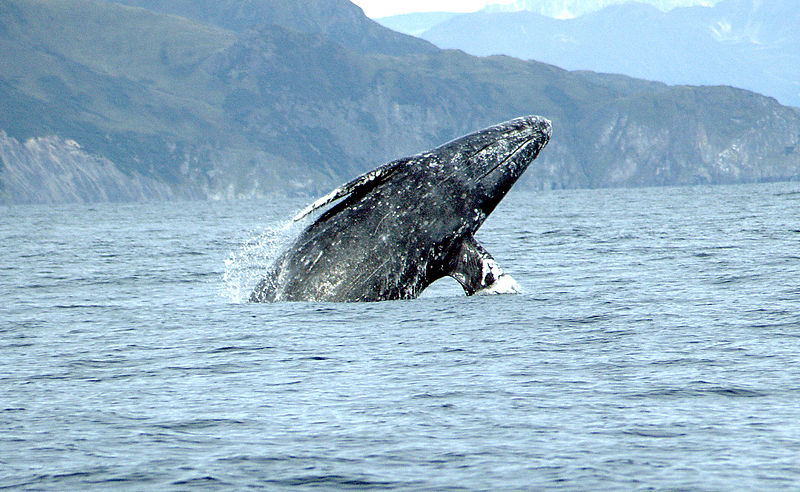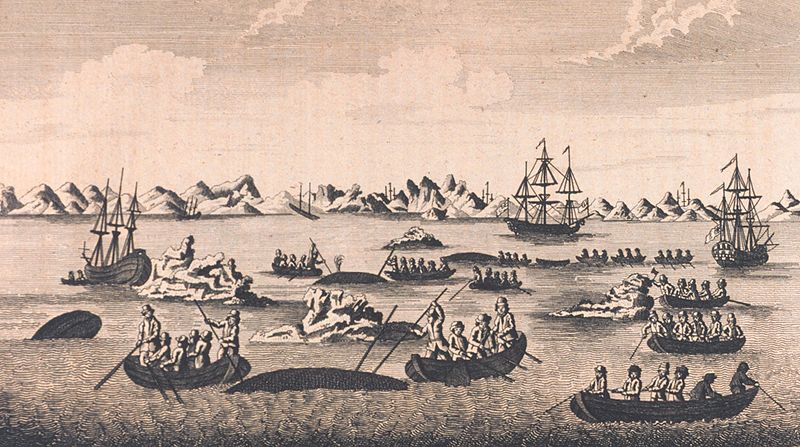I’ve lived in southern California for almost four years and have spent countless hours watching the ocean, boats, surfers, dolphins and sunsets. The migration route of the Gray Whale runs from Alaska to Baja California, so I’ve been hopeful, and for the first time yesterday, I saw whales. I watched the spouts of water, waiting patiently, and then finally, one at a time, the whales breached. Amazing.
So today I’ll share a bit of what I’ve learned about the world of whaling. Although there is historical evidence that people have been hunting whales since prehistory, it was mostly for personal and community use. Not until the early 17th century did whaling become a commercial enterprise
Whale oil, from the blubber of whales, was the primary goal, but other parts of the whale were also used. In the early 17th century, their “technology” allowed the hunters to retrieve ever larger whales and bring them to the fisheries to be processed. They also were able to go farther out to sea when they had depleted the supplies of whales closer to the shore.
Because whales brought in big money, more and more countries got involved in sending more and more whaling ships to areas known to have large whale populations. The Dutch, Danes, British, French, and the Spanish all wanted to dominate the market, so there were some early skirmishes. These decreased as ships traveled farther and expanded their hunting to other types of whales found in areas other than the North Atlantic.
They golden age of commercial whaling as an industry was in the mid 19th century, but the whaling era spanned from the 17th century until 1986, theoretically. There were whaling bans in various areas throughout the years, partly because of decreased whale populations, and partly due to tensions between whalers and traditional fishermen. Then in 1986 the International Whaling Commission (IWC) instituted a moratorium on commercial whaling, but still allowed whaling for scientific research purposes. Of course, this hasn’t completely stopped commercial whaling. There are issues of enforcement and national sovereignty to consider.
I’m a child of the ‘70s. I grew up with “Save the Whales” bumper stickers and Greenpeace. Watching a pod of whales brings back all those feelings about wanting to ensure that we never lose these magnificent animals. And if you want to smile like I did watching the whales yesterday, check out this video of a couple of Norwegian fishermen. You don’t need to speak Norwegian to understand what they’re feeling.



Great story!!! How great that you got to see them, and the video was great, too!
Glad you enjoyed it! I can’t watch that video without smiling. Different brand of whale, but so cool.